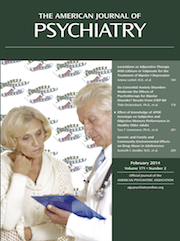Dr. Nakamura, a cultural and visual anthropologist, is Associate Professor of Anthropology and East Asian Studies at Yale University. Although her parents are Japanese, she was born and spent her formative years outside of Japan. She describes her blood as Japanese, her heart as American, and her body as Australian. As an anthropologist, her specialty is minority groups in Japan, especially those with disabilities. Japanese law defines three types of disabilities: physical (for instance, deafness or blindness or mobility difficulties), intellectual (developmental or learning disabilities), and psychiatric (mental and psychiatric disorders, including epilepsy and dementia). In A Disability of the Soul, Dr. Nakamura examines the possibility of remodeling society to better accommodate people with psychiatric disorders.
In 1984, Bethel House was founded in the town of Urakawa to help people with severe psychiatric disorders, such as schizophrenia, restart their lives in the community after discharge from the long-term psychiatric ward of Urakawa Red Cross Hospital. Urakawa is a small fishing village located on the southeastern edge of the island Hokkaido, Japan’s northern frontier. Bethel, which appears in the Old Testament and means “House of God,” is also a reference to the Bethel Institution, a psychiatric hospital in Germany. In 1940, doctors there courageously resisted orders from Adolph Hitler to euthanize their patients in a prelude to his Final Solution to the “Jewish question.” Since self-disclosure is an important part of Bethel culture, in her engaging narrative, Nakamura also discloses her own history of mental illness (major depression). In addition, she addresses the role of Christianity in the formation of Bethel House.
The book runs to 219 pages, divided into eight chapters, with 27 pages of additional notes, as well as an index. The first section details the history of mental illness and psychiatric care in Japan, from medieval times to the present. Included is the Utsunomiya Hospital Incident of 1983, one of the most notorious events in psychiatric care within Japan.
Psychiatric treatment in Japan suffers from two main problems, namely, long inpatient stays and polypharmacy with high dosing. Polypharmacy in Japan may have its roots in Chinese-based herbal medicine, where it is common for herbal practitioners to mix their own special blend of herbs in specific proportions for individual patients. The author explains the two forms of psychotherapy in Japan, both of which were developed in the prewar period. Morita therapy emphasizes the notion of “arugamama,” which translates to “how things are/as things are.” In contrast, Naikan therapy embraces a secular version of selected ascetic medication practices of Pure Land Buddhism. Nakamura then follows with some background into the setting of Hokkaido and reasons why the Christian church is so predominant there.
In the second section, she describes the foundation of Bethel House by a social worker and explores its early relationship with the Urakawa Church of Christ. Using a unique community approach to psychosocial recovery, Bethel focuses as much on social integration as on therapeutic work. The most important of Bethel’s core principles is “meeting before eating.” In 1989, the Welfare Shop Bethel was started, through which disposable diapers and other rehabilitation products were sold to elderly members of the community and patients in the hospital. Through this close relationship between hospital and town, Bethel has been extremely successful in carefully reintegrating its members into society. It has become an effective model alternative to long-term hospitalization in a country with some of the longest institutional stays, as well as the highest rates of pharmaceutical use, in the developed world. A major part of this book is devoted to documenting the arrivals and departures from Bethel.
In summary, this book represents a treasure trove of historical practice and readily usable knowledge. All chapters are well referenced and easily readable. The book is also accompanied by a DVD containing two fascinating documentaries about Bethel made by the author: Bethel: Community and Schizophrenia in Northern Japan and A Japanese Funeral (winner of the Society for Visual Anthropology Short Film Award and the Society for East Asian Anthropology David Plath Media Award). A Disability of the Soul is a sensitive and multidimensional portrait of people with severe psychiatric disorders in contemporary Japan. Therefore, I would strongly recommend it to all medical practitioners, particularly psychiatrists and mental health therapists.

